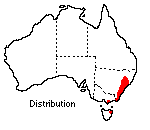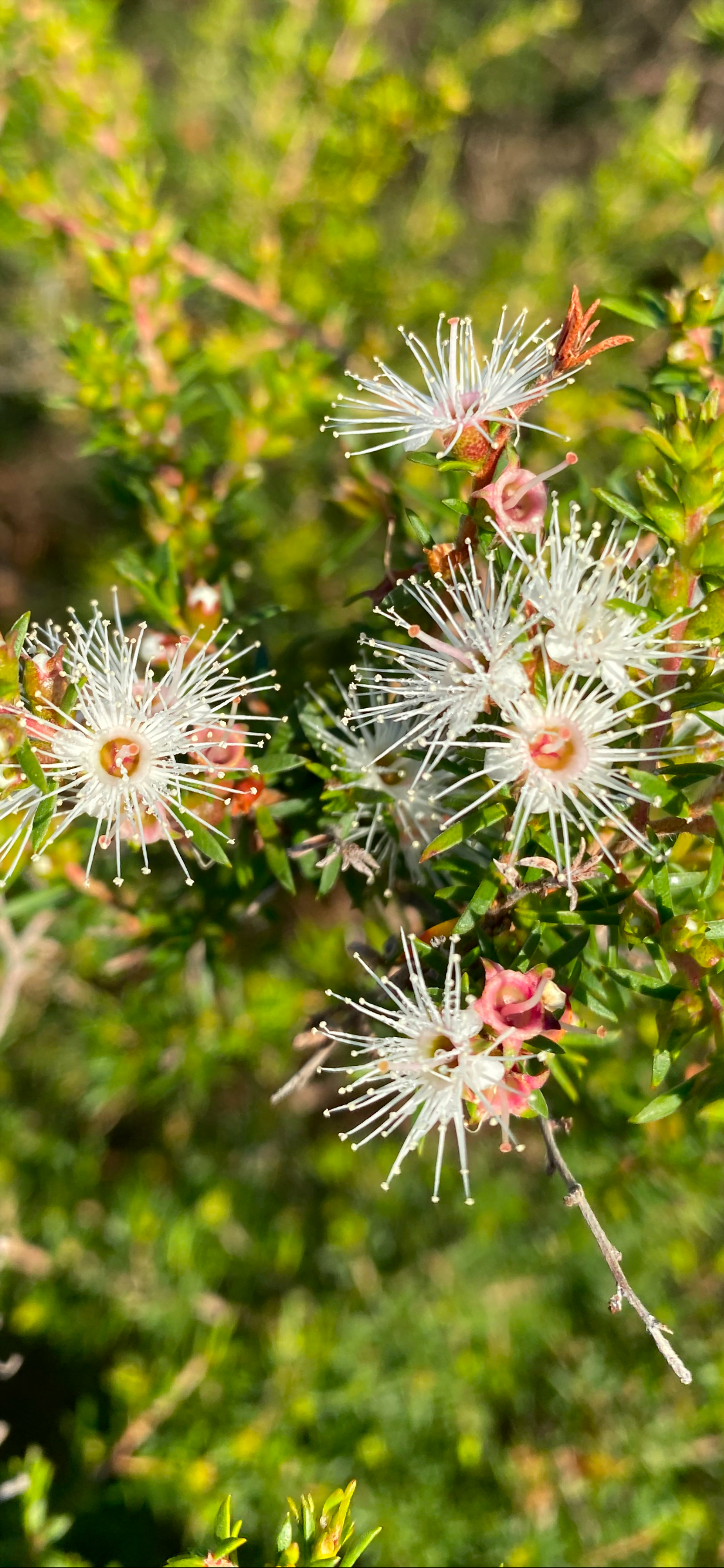
Kunzea Ambigua
Common name: Tick bush
I grow best: Shrub up to 4m
• Attracts birds, native bees and invertebrate creators
• Flowers varies from September and early November.
• Well drained or sandy soils
• Cultural uses
• Eastern Suburb Banksia Scrub
Looks like: Is a shrub of variable growth habit reaching a height of about 2-3 m in New South Wales regions where on sandstone and granite-based soils it grows into a rather stiff, upright, spreading shrub with fibrous furrowed bark. This form has masses of small creamy-white, honey-scented flowers borne in heavy sprays. Masses of spreading stamens concealing the tiny petals give the flowers a fluffy appearance. The flowering period varies between September and early November.The leaves, small and crowded (about 1 cm long) and narrow-linear in shape, are produced on short stalks. The seed capsules are distinctive, but remain on the plant only until the fruit matures. They are somewhat bowl-shaped, often with a rosy bloom. Capsules are divided into several compartments which open by radiating slits in the top to disperse their contents.
Habitat & Distribution: Tick bush is commonly found growing on the coastal strip and adjacent plateaus of eastern Australia (New South Wales, Victoria, Tasmania), often forming dense thickets. This genus, which is of the family Myrtaceae, is confined to Australia and is closely allied to Leptospermum although it is readily distinguished by its long protruding stamens.This species propagates readily from seed or semi-hardwood tip cuttings taken in late spring through to early autumn. To induce speedier results in striking cuttings a commercial rooting hormone may be used. Little maintenance is required other than an application of a complete fertilizer in early spring and light pruning and shaping to develop a compact, bushy shrub. A common pest is the webbing caterpillar which may be controlled by physical removal or by an application of a systemic insecticide.Under cultivation K. ambigua grows into a handsome shrub which attracts numerous birds and colourful soldier beetles when in flower. It adapts to many situations and may be used as a background shrub, for screening or as a feature plant.
| Family | Myrtaceae |
| Plant Type | Small shrub, Large shrub |
| Width | 3 |
| Flowering Time | Spring |
| Soil Type | Sandy, Loamy, Sandy loam, Clay loam, Poor soil |
| Climate Zone | Warm temperate, Cool temperate, Mediterranean, Cool |
| Growth Habit | Evergreen, Spreading |
| Soil Moisture | Dry, Well-drained, Moist moderate drainage |
| Special Uses | Fragrant oils, Bonsai, Erosion control, Honey producing plant, Bird nesting plant, Fast growing, Playground friendly |
| Height | 5 |
| Flower Colour | White, Cream |
| pH Level | Acid, Neutral |
| Plant Environment | Low maintenance garden, Flower garden, Coastal garden, Drought resistant |
| Light | Sunny, Light shade, Half shade |
| Lifespan | Perennial |
| Frost Tolerance | Tolerates heavy frost, Tolerates light frost |
| Attracts Wildlife | Bees, Nectar eating birds, Butterflies, Other insects |
Distribution:

Traditional uses: Kunzea Oil can provide temporary relief of the pain of arthritis, rheumatism, muscular aches and pains, insect bites and insect bite inflammation, and cold and flu symptoms.

